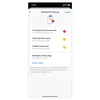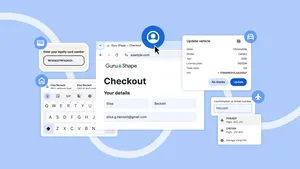Browse safely with real-time protection on Chrome

Cybersecurity attacks are constantly evolving, and sometimes the difference between successfully detecting a threat or not is a matter of minutes. To keep up with the increasing pace of hackers, we’re bringing real-time, privacy-preserving URL protection to Google Safe Browsing for anyone using Chrome on desktop or iOS. Plus we’re introducing new password protections on Chrome for iOS as another way to help you safely navigate the web.
Real-time protection through Safe Browsing
Safe Browsing already protects more than 5 billion devices worldwide, defending against phishing, malware, unwanted software and more. In fact, Safe Browsing assesses more than 10 billion URLs and files every day, showing more than 3 million user warnings for potential threats.
Previously, the Standard protection mode of Safe Browsing used a list stored on your device to check if a site or file was known to be potentially dangerous. That list is updated every 30 to 60 minutes — but we’ve found that the average malicious site actually exists for less than 10 minutes.
So now, the Standard protection mode for Chrome on desktop and iOS will check sites against Google’s server-side list of known bad sites in real time. If we suspect a site poses a risk to you or your device, you’ll see a warning with more information. By checking sites in real time, we expect to block 25% more phishing attempts.
Proceed with caution when you see this warning from Safe Browsing.

The new capability — also rolling out to Android later this month — uses encryption and other privacy-enhancing techniques to ensure that no one, including Google, knows what website you’re visiting. While this does require some additional horsepower from the browser, we’ve worked to make sure your experience remains smooth and speedy.
If you want even more protection, you can always turn on Safe Browsing’s Enhanced Protection mode, which uses AI to block attacks, provides deep file scans and offers extra protection from malicious Chrome extensions.
Updates to Password Checkup
Password Checkup on iOS also recently got an update: Now, in addition to flagging compromised passwords, it will flag weak and reused passwords, too. Chrome will display an alert whenever it detects an issue with a password you’ve entered, but you can check your passwords any time by visiting Safety Check in Chrome Settings.
Check weak and reused passwords with Password Checkup.

Look out for these features on Chrome and stay tuned for more ways we’re helping you stay safe online.






